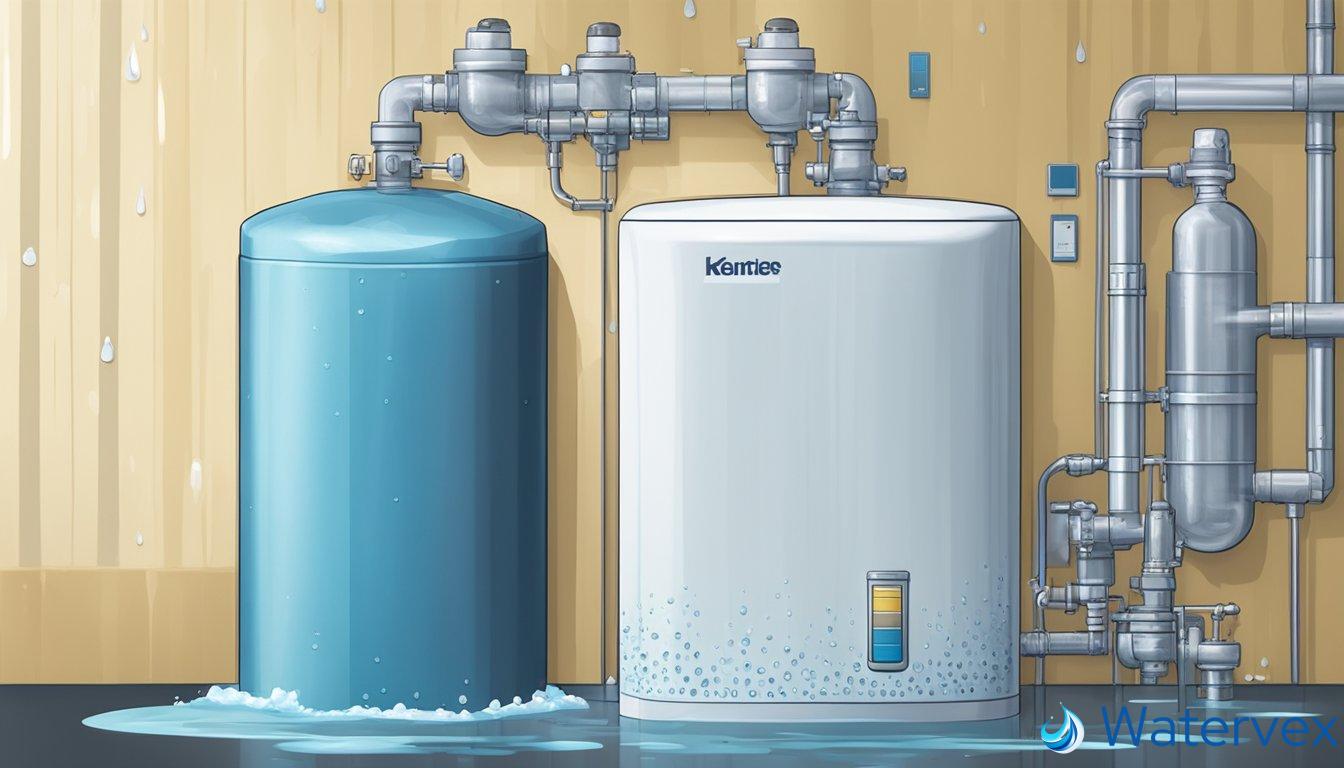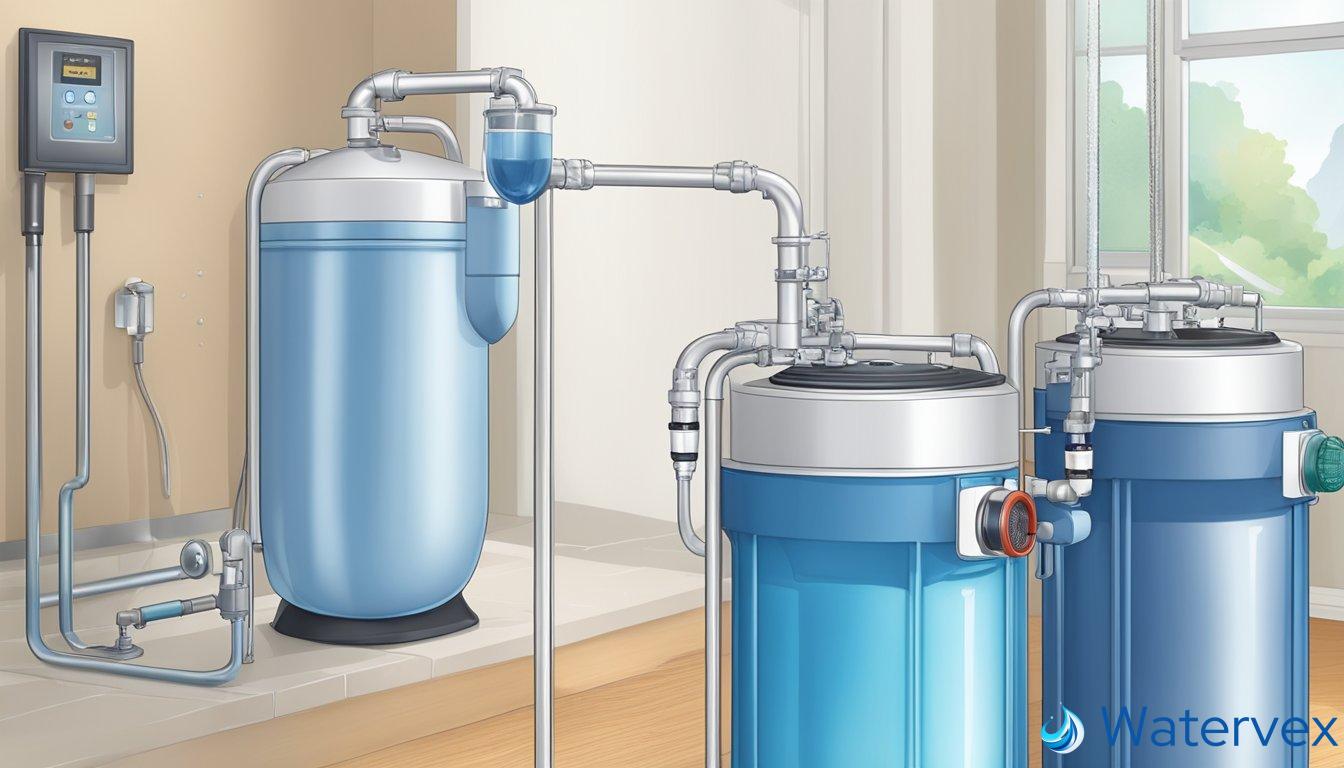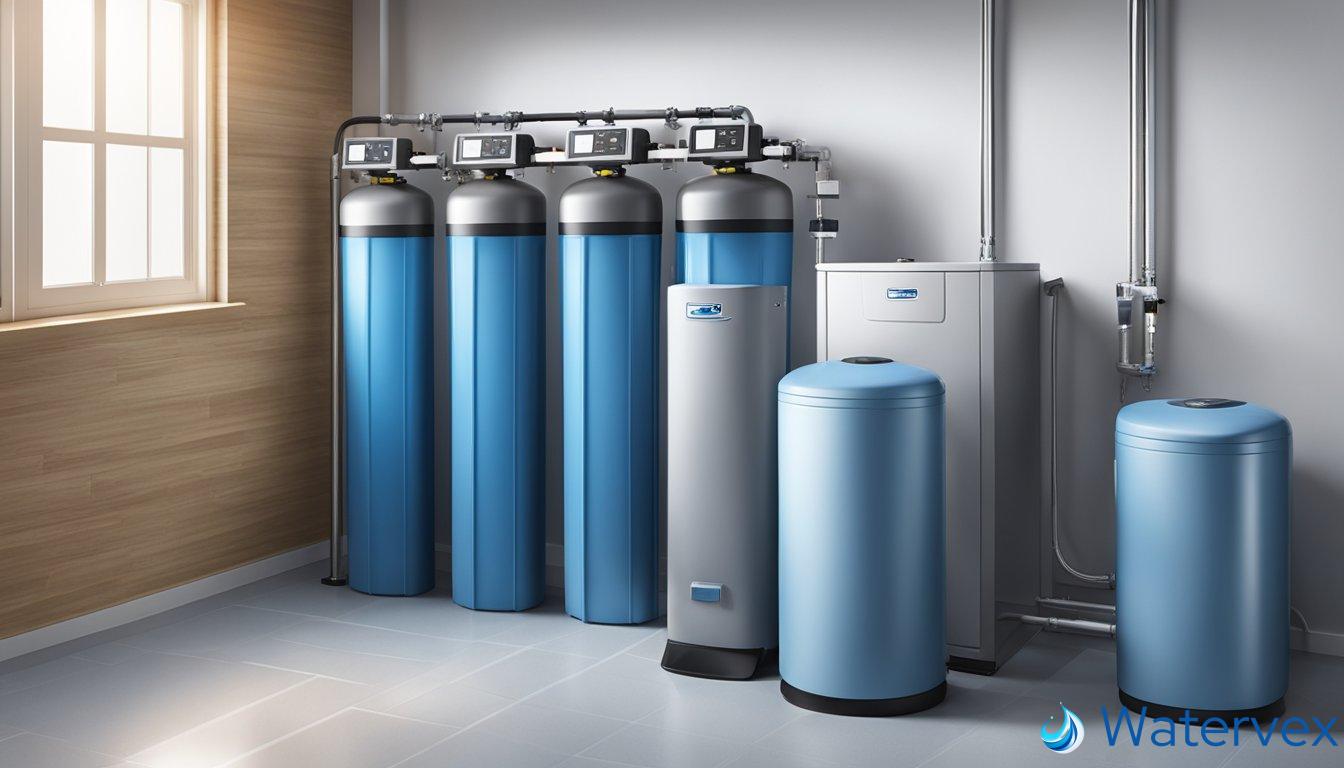When your water softener starts showing signs of “sweating,” it’s understandable to be concerned. This phenomenon occurs when condensation forms on the surface of the water softener tank, often due to temperature differences between the water in the tank and the air outside. High levels of moisture in the air and warmer temperatures can contribute to this sweating effect. It’s essential to note that while some condensation is normal, excessive sweating could be indicative of a larger issue.

Maintaining the right conditions around your water softener can help minimize sweating and the potential problems it brings, such as water damage or mold growth. There are effective steps you can take, such as improving ventilation, insulating the tank, or controlling humidity levels in the area where your water softener is housed. If you notice an unusual amount of sweat on your water softener, it may be worth seeking professional advice to ensure there isn’t an underlying issue that needs addressing.
Key Takeaways
- Water softener sweating is typically caused by condensation due to temperature differences.
- Excessive sweating can lead to moisture-related issues and may require preventive measures.
- Consulting a professional is advisable if you observe abnormal sweating on your water softener.
Understanding Water Softener Sweat
When your water softener exhibits condensation, it’s often a clash between temperatures—cold water inside and warm, humid air outside.
Causes of Condensation on Water Softeners
Humidity plays a critical role in the phenomenon often referred to as “sweating” on water softeners. When humid, warm air surrounds the cooler surface of a water softener, it results in condensation. This is because the warm air can hold more water than cooler air, and when it comes in contact with the cooler surfaces of water pipes or your water softener, the air’s temperature drops, it can no longer hold as much moisture, which then forms water droplets on the cool surface.
The occurrence is particularly noticeable in areas with high humidity levels. Basements, where water softeners are commonly located, can have less airflow which contributes to higher humidity and thus, more condensation on the water softening unit. If you find your water softening pipes “sweating” more than usual, it may be an indication that the room has excess humidity that needs to be addressed.
- Check the room’s ventilation: Improving airflow can help reduce humidity levels.
- Consider a dehumidifier: A dehumidifier can lower the moisture content in the air around your water softener, reducing condensation.
- Pipe insulation: Insulating your water softener’s pipes can keep them closer to room temperature and prevent the formation of condensation.
By understanding the role of temperature and moisture in the air, you can better diagnose and address the “sweating” of your water softener and keep your home dry and comfortable.
Prevention and Solutions

To tackle water softener sweating, specific measures can be employed to insulate and control the humidity around your system, ensuring its efficiency and longevity.
Effective Insulation Techniques
Insulation is key to prevent water softener tanks from sweating. Particularly, tank jackets or insulation blankets designed for water softeners can offer an immediate solution. These jackets are typically made of foam and can be easily wrapped around the tank to reduce condensation. Similarly, neoprene sleeves are effective for insulating smaller pipes, preventing the cold water inside from affecting the air temperature around them. When choosing insulation options, look for materials that provide a snug fit and are resistant to moisture.
Regulating Humidity Levels
Managing the humidity in the area where your water softener is located can also combat tank sweating. Utilizing a dehumidifier can help keep the moisture levels in the air under control, typically aiming for a range between 30 to 50 percent humidity. This not only hinders condensation but also wards off potential mold growth. Moreover, ensuring proper ventilation can aid in maintaining a consistent climate around the water softening system.
When to Call a Professional

In addressing your water softener’s condensation issue, there are certain instances where seeking a professional plumber’s expertise becomes essential. Firstly, if you notice a persistent leak despite your best troubleshooting efforts, this could indicate a more complex problem that warrants a professional inspection.
Secondly, the presence of mold and mildew around your water softener is a red flag. Not only does this suggest excessive moisture, but it also poses potential health risks to you and your family, as mold spores can affect air quality.
Thirdly, if you start seeing signs of structural damage, such as warping or staining on nearby surfaces, it’s time for immediate professional intervention. Water damage can compromise the integrity of your home’s structure and should be dealt with promptly.
Following safety precautions, it’s advisable to call in a professional plumber when:
- DIY solutions do not stop the sweating
- You are unsure about proper insulation techniques
- There’s evidence of leaks, mold, or structural damage
Here’s a brief overview for when to contact a professional:
| Situation | Action |
|---|---|
| Persistent Leak | Call Plumber |
| Mold Presence | Call Plumber |
| Structural Damage | Call Plumber |
Remember, while some DIY maintenance can be effective, professional plumbers have the tools and knowledge to assess and remedy the situation safely. Your family’s health and safety should always come first.

